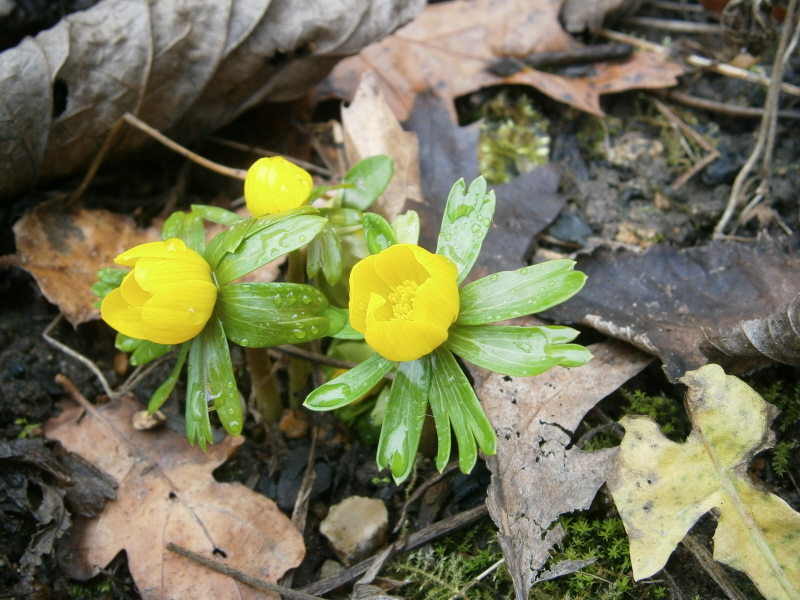
02 Feb February – Signs of Hope
Half way through winter and there are signs of hope in the garden.
This morning I heard the thrush for the first time this year. He was joined in a brief dawn chorus rehearsal by a blackbird and dunnock, adding to the familiar tune of the robin, which has wrapped melancholy like mist around the garden. We are exactly at the half way point between the winter solstice and the spring equinox, a date celebrated in the Celtic calendar as Imbolc and in the Christian calendar as Candlemas Day.
It is a day when we celebrate new life waiting to return to the earth. The garden may be barren, the grass crossed by frost blackened paths, the earth puddled down and seeming lifeless, last year’s plants lying like brown shadows across the borders. But there are a few beacons of hope: by the front door, bright yellow globes of aconites shine, and tucked beneath the hazel are emerging heads of snowdrops. The snowdrop is often called Candlemas Bell because it appears at this half way point of the winter, like a small candle in the dark.
The beginning of February marks the point when warmth and light begin to return to the earth. Traditionally we light candles to celebrate. The land is still sleeping but the seeds of new life are waiting to emerge. Days are noticeably longer. Birds are courting and the blackbird has been prospecting for a nest site. This is the time for planning, for ordering seeds and plants for the coming year, for looking forward and for hope, for optimism and renewal.
It is also a day which can indicate the weather ahead. An old saying suggests:
If Candlemas Day be fair and bright
Winter will have another flight.
If Candlemas Day brings cloud and rain
Winter will not come again.
We will wait and see how winter progresses but it was neither fair nor raining today. A soft morning with cloud and a breeze that gave wing to the buzzards and saw a hundred or more fieldfare gather to feed in the wheat field.


